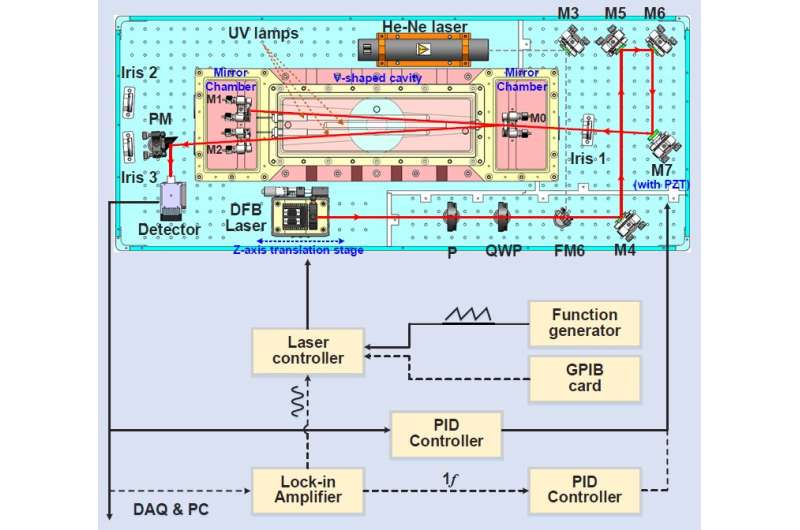Hydroxyl radicals first detected at 2.8 μm wave length with optical-feedback cavity-enhanced absorption spectroscopy

Based on optical-feedback cavity-enhanced absorption spectroscopy (OF-CEAS) technology, a research team led by Prof. Zhang Weijun from the Hefei Institutes of Physical Science (HFIPS) of the Chinese Academy of Sciences (CAS) has recently detected hydroxyl radical (OH) at 2.8 μm wavelength with a distributed feedback diode laser.
The results have been published in Optics Express.
OH free radicals are the most important oxidant in the atmosphere. Rapid circulation reaction determines the production and removal of major pollutants in the atmosphere. Accurate measurements for OH radicals are very difficult due to their high reactivity, short life, and low concentration in the atmosphere. And it is an important and challenging research topic in the field of atmospheric chemistry today.
"This study provides a new direct detection method for OH radicals," said Yang Nana, first author of the paper.
She further explained that OF-CEAS used resonant light of the cavity to feed back to the laser, which could effectively narrow the laser linewidth. Besides, it could realize optical self-locking to improve the coupling efficiency of the laser and the cavity and achieve high-sensitivity detection.

In this research, the team used the wavelength modulation method to control the optical phase. They used the 1f signal of the cavity mode demodulated by the lock-in amplifier as an error signal and sent it to the Proportional integral differential servo controller to control the distance from the laser to the cavity. The system, therefore, achieved real-time phase locking. The detection sensitivity was about three times better than that of the symmetry analysis method.
Combined with Faraday Rotation Spectroscopy and Frequency Modulation Spectroscopy, OF-CEAS can provide a new and higher sensitivity approach for direct detection of atmospheric OH radicals.
More information: Nana Yang et al, Optical-feedback cavity-enhanced absorption spectroscopy for OH radical detection at 2.8 µm using a DFB diode laser, Optics Express (2022). DOI: 10.1364/OE.456648
Journal information: Optics Express
Provided by Chinese Academy of Sciences




















